
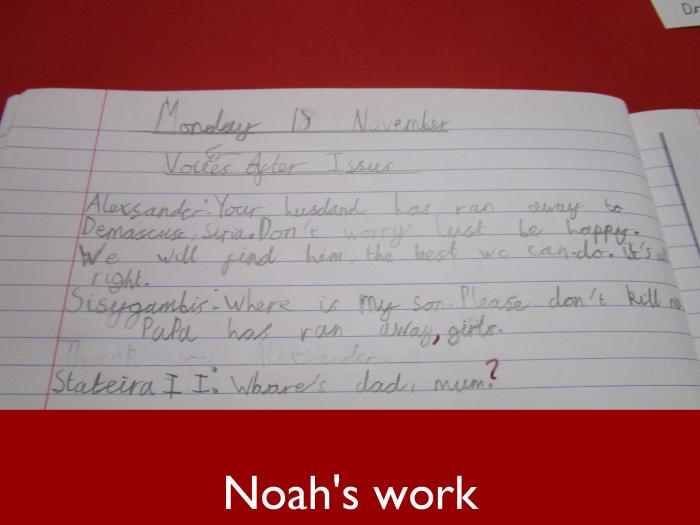

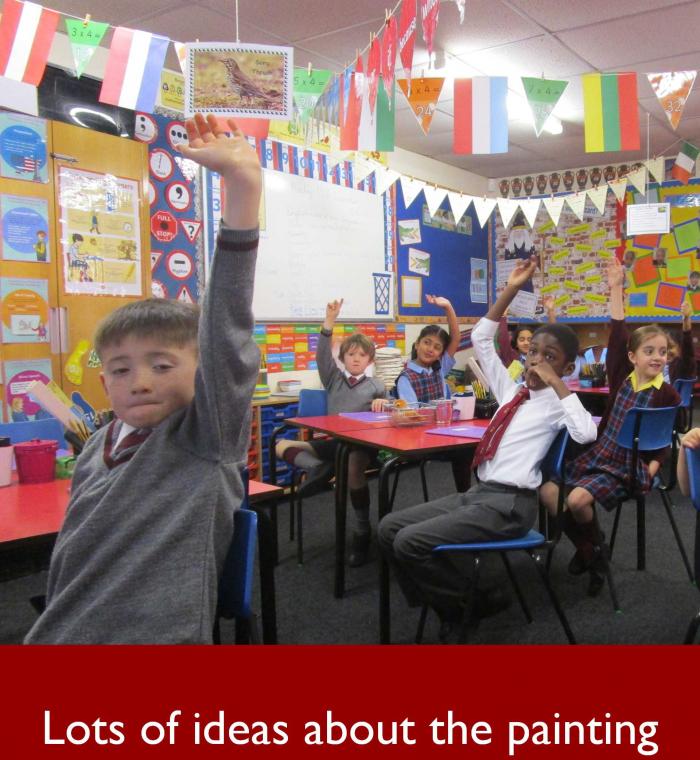
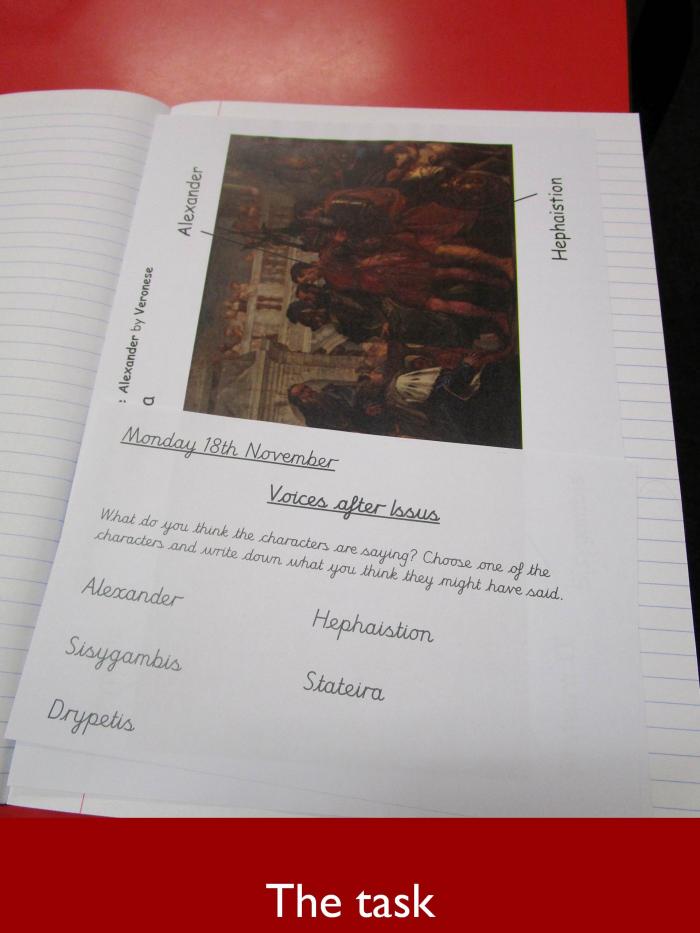
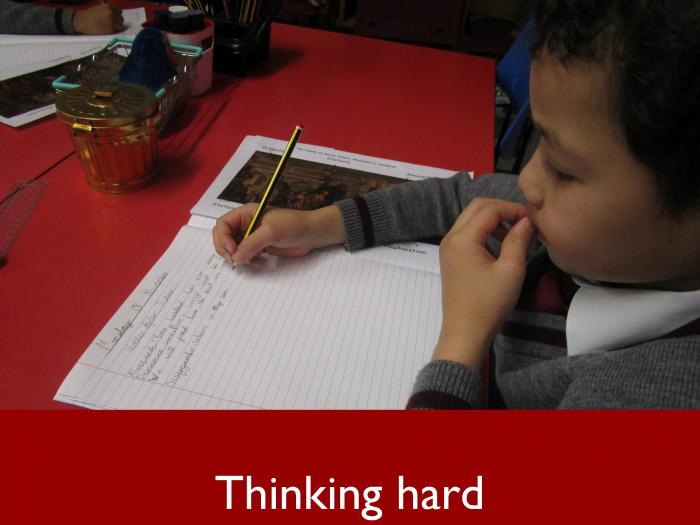
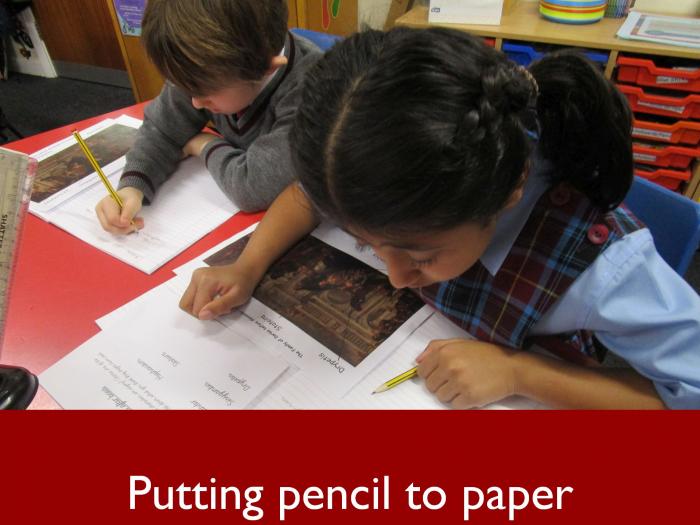

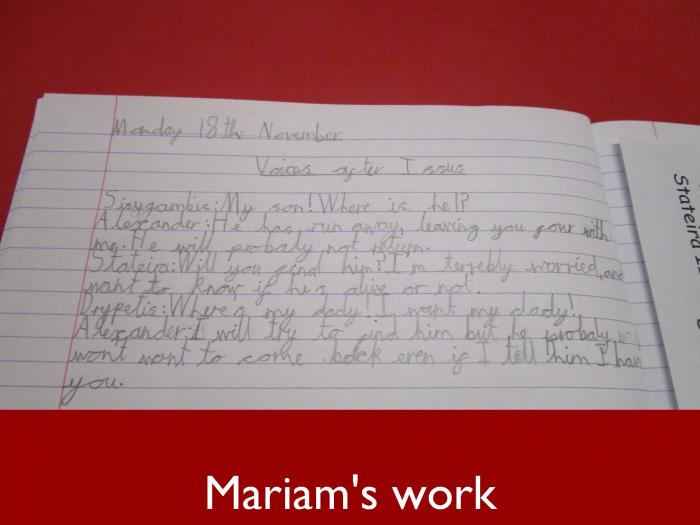
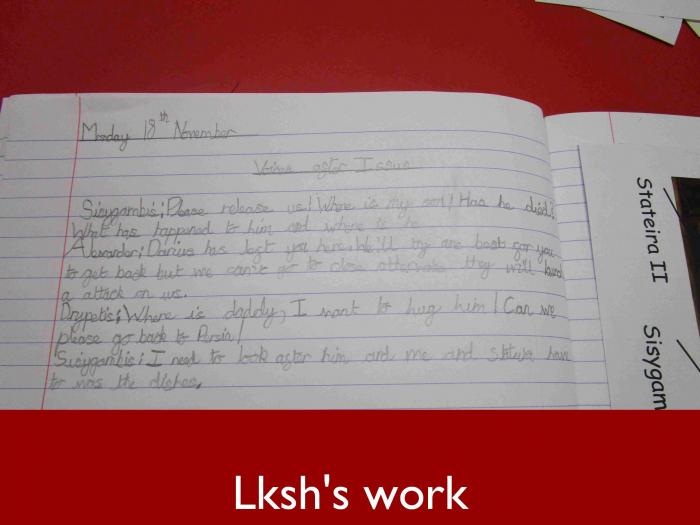
Voices From Long Ago
In Room 9 of London’s National Gallery hangs a painting by Veronese called The Family of Darius before Alexander. It is a monumental work, not merely because of its great size but also on account of its complexity and the highly engaging narrative it tells. Even in the company of other works by masters of the Italian Renaissance, it stands out. The writer Henry James once memorably described how, on a dull November day, “the picture sends a glow into the cold London twilight.” It is one of those paintings that reveals something new every time you look at it. I was keen to use it in 3PF to see if it could help the children establish empathy with a group of historical figures who lived well over 2000 years ago.
We have been studying Ancient Greece since September, and the different aspects of this challenging topic are now beginning to fall into place for the children. Recently, we have explored the life and times of one of the most famous figures of all, Alexander the Great. In their previous lesson, I gave the children the task of constructing a timeline of his life. Rather sneakily, I removed the dates from the events on the timeline, instead giving the children iPads and asking them to work in pairs to research the missing information. The bold text you can see on the research sheet provided a clue as to what needed to be typed into Google to produce the required dates.
Returning to the topic this week, I was impressed by how much of this learning the children could recall. Archie remembered that Alexander won some important battles, whilst Sania told me that he married Roxana in 327BC. Meanwhile, Alexander (the modern, Form 3 version!) described how he had his friend Cleitus killed after an argument. It was fair to say that, as we began our lesson, we already had a fairly good idea of what sort of a person Alexander the Great had been. Now it was time to focus on one specific moment in his life.
Without wanting to give too much away, except to emphasise that the picture was not contemporaneous with Alexander’s life, I showed the Veronese painting on the whiteboard and allowed the children to take a good look at it. What, did they think, was happening? What was the message that the artist was seeking to convey? Freddie noticed the people lined up on the balcony and suggested that they were celebrating something, whilst Noah focused on the small figure in red and believed that this person was in need and being assisted by the others. Raina’s idea was that the people were gathered to bury someone, and Amryn wondered whether they were intending to put the girls in a chariot. I welcomed all these explanations, and I was particularly interested to hear Lksh’s theory that the prominent male figure in blue was Philip of Macedon, Alexander’s father. By contrast, Ameh drew attention to the weapons carried by some of the Greeks, which he said indicated that there had been a war.
Ameh was very perceptive. Indeed, the painting shows the aftermath of the Battle of Issus in 333BC. I had prepared a short Powerpoint to take the children through the events leading up to the battle to give them a better understanding of the context. The battle was part of Alexander’s ambitious drive eastwards to conquer new territories for the Greeks, which eventually took him as far as India, an unbelievable feat in ancient times. In his way stood Darius III, the emperor of Persia, and there was certainly no love lost between the two leaders. In 333BC, their armies met in the eastern corner of Turkey, not far from the present day city of Iskenderun, which incidentally is one of the many cities named after Alexander. Darius thought he could take Alexander’s much smaller army by surprise and surround it, and at first it looked like a Persian victory would be a formality. However, Alexander inspired and organised his men so magnificently that, despite an unpromising start, he emerged victorious. Darius lost and fled the battlefield, leaving all his possessions behind.
The children were not in the slightest bit impressed to hear that Darius also left behind his family. When the Greek soldiers discovered these women hiding in their tent on the edge of the battlefield, they summoned Alexander, and the subsequent meeting forms the subject of Veronese’s painting. We can see Darius’ mother, Sisygambis, kneeling before Alexander and his friend Hephaistion. With her are Darius’ wife, Stateira, and his daughters, Drypetis and Stateira II. I wanted the children to put themselves in the shoes, or perhaps the sandals, of these characters, and consider what they must have been thinking. What were their concerns, their priorities, in this uncomfortable situation?
Everyone was quick to grasp that the women were in a perilous situation, and most could draw a distinction between Drypetis’ wailing “I want my daddy!” and Sisygambis’ more rational pleading to know what had happened to her son. Zeba was good at conveying the elder Stateira’s anxiety, having her say, “Oh my! Why did Darius run away? It was very silly of him.” I liked the way in which Raina considered precisely how the characters might have addressed each other; after all, they were royalty. “Do not worry, my fair lady,” she had Alexander say to Stateira, “I will send my army to look for your husband.” I was impressed that Lksh managed to look beyond the immediate situation on the battlefield and think about the possible consequences of searching for Darius. “I will try my best,” said Alexander, “but we can’t go too close, otherwise they will launch an attack on us.”
I enjoyed reading all the children’s ideas, but no-one managed to work out exactly what happened, which was a case of mistaken identity. It seems that Sisygambis was in such a flap that, when the two Greek warriors entered the tent, she confused Alexander with Hephaistion. Realising her mistake, she feared the worst, but Alexander showed that he could be as kind as he was ruthless, telling simply her that Hephaistion was “another Alexander”, and treating the women courteously.
I finished the lesson by asking the children to think about whether we can use the Veronese painting as a source for learning about the Battle of Issus. How, I wondered, did Veronese himself know what had happened? I would imagine he would have had access to the writings of the Greek historians such as Arrian and Plutarch but he might also, as Lksh suggested, have paid a visit to Turkey to take a look at the battlefield. I know there is a great deal left to discuss in the painting and hope to return to it soon and use it as a starting point for discussion in one of our philosophy lessons.